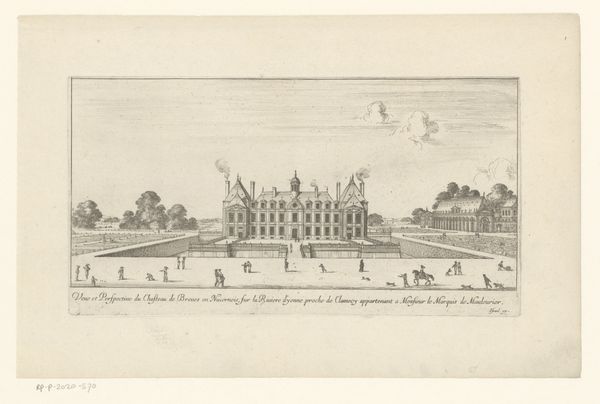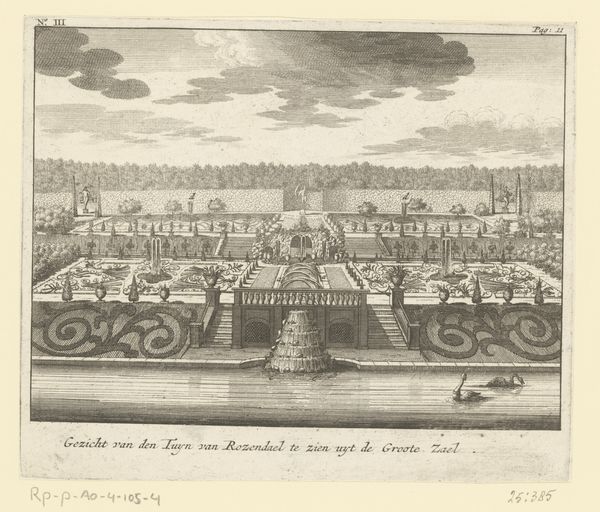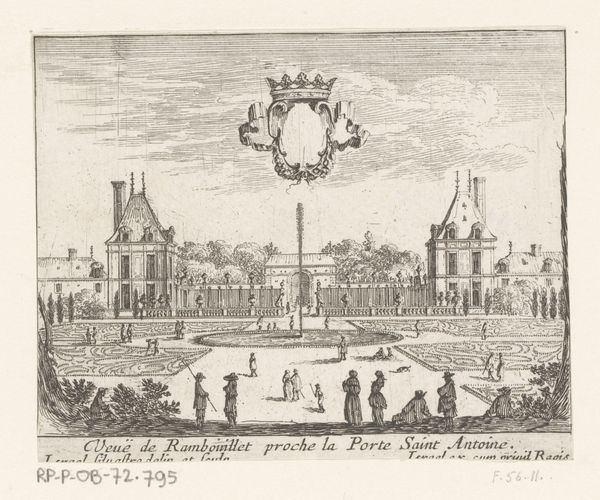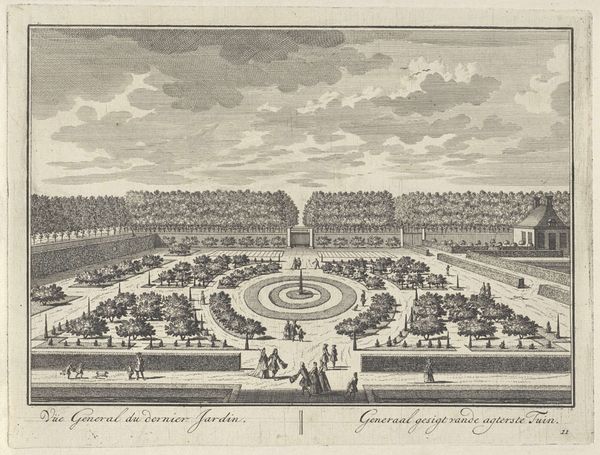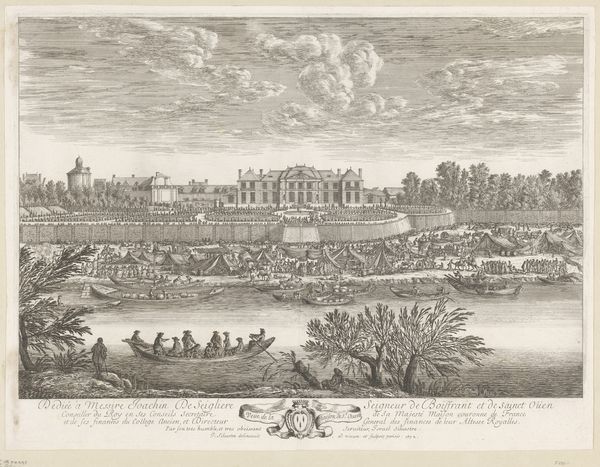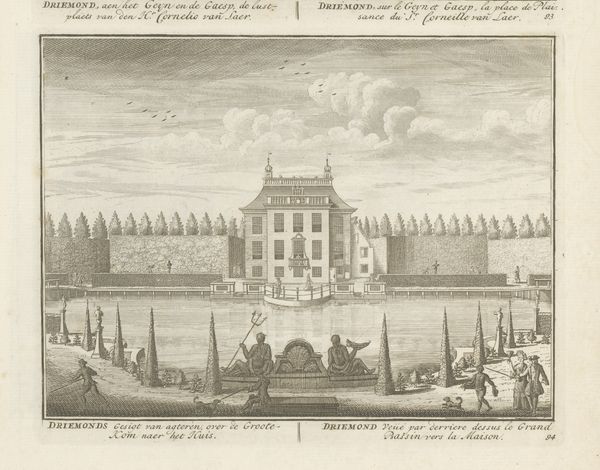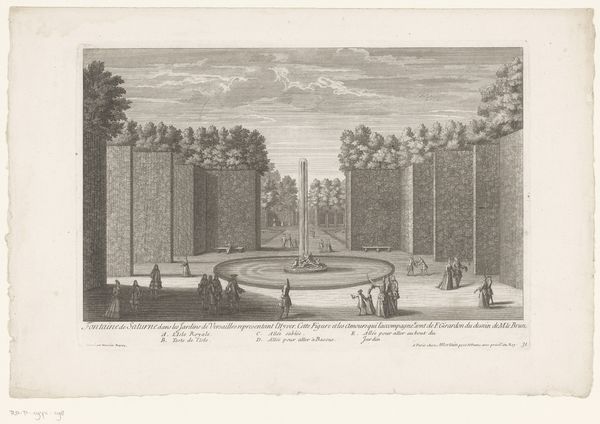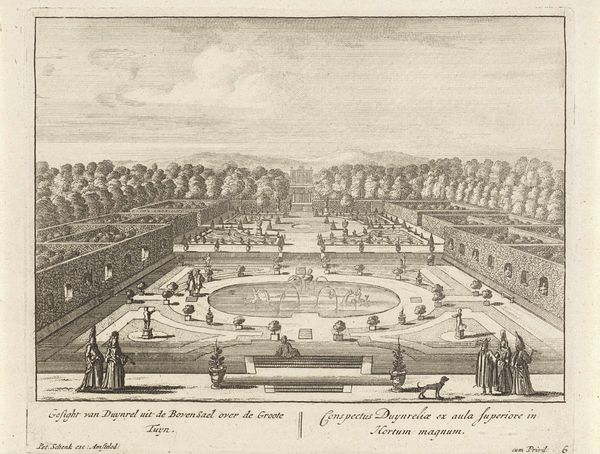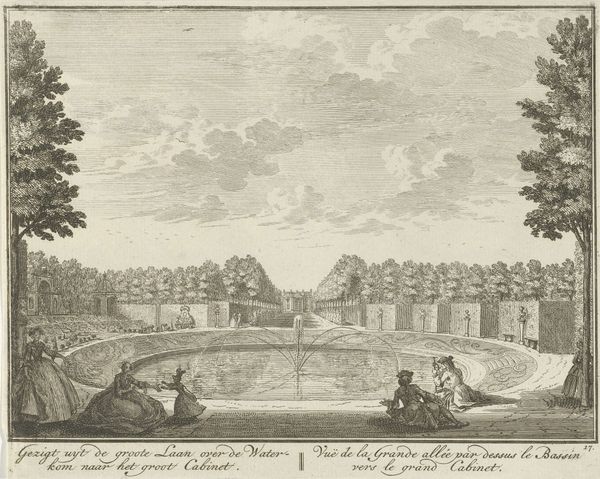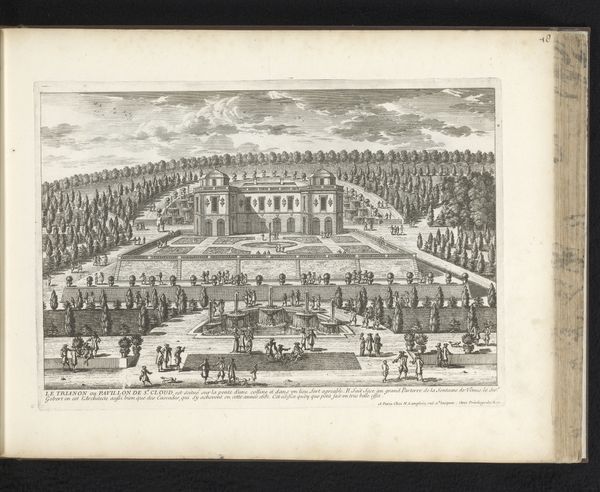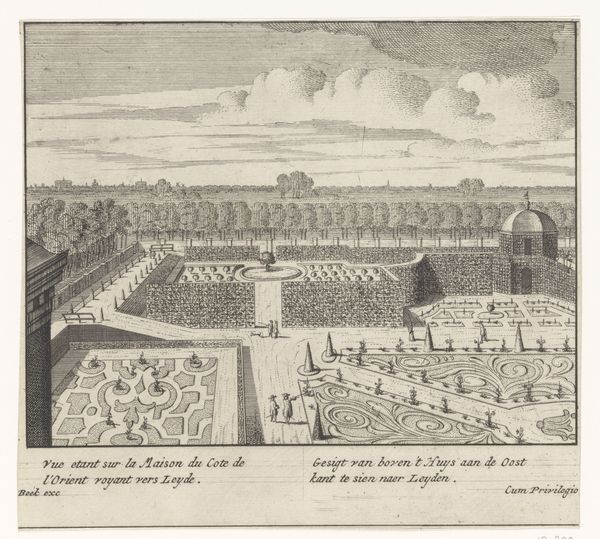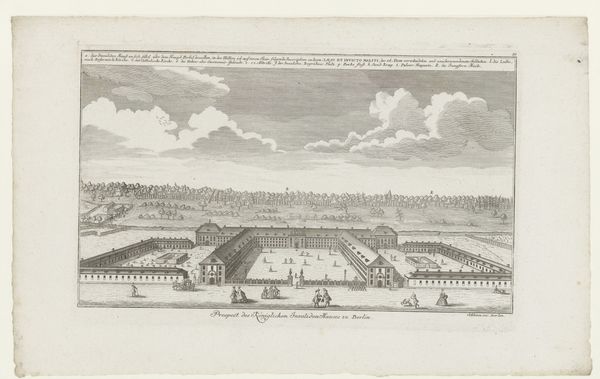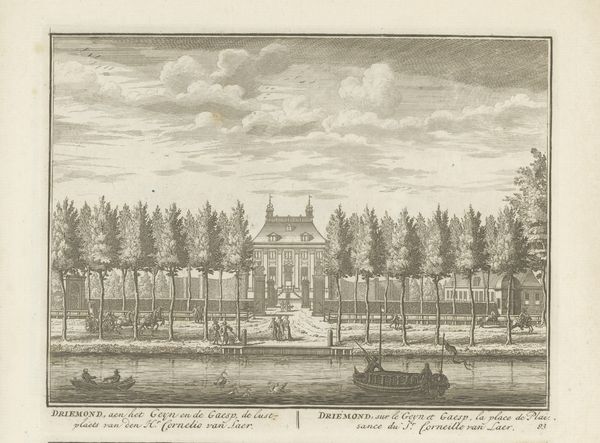
Gezicht op de vijver met obelisk in de tuin van de buitenplaats Driemond 1790
0:00
0:00
Dimensions: height 161 mm, width 201 mm
Copyright: Rijks Museum: Open Domain
Daniël Stopendaal created this print of the pond and obelisk at Driemond in the Netherlands. Without a date, we can still look at the formal landscaping of this country estate in its social and cultural context. The symmetrical layout, with its central obelisk, reflects the values of order and control prized by the wealthy elite of the Dutch Golden Age. These formal gardens were not just for aesthetic pleasure; they were statements of power and status. Owning land and shaping it in such a deliberate way broadcasted a family's wealth and influence. The obelisk itself, an ancient Egyptian symbol appropriated by European elites, speaks to the cultural aspirations of the Dutch ruling class. They saw themselves as inheritors of classical traditions and global explorers, even as their wealth was built on colonial exploitation. To truly understand this image, we need to delve into the history of Driemond, its owners, and the social hierarchies of the time. Estate records, family papers, and period writings can reveal the full story behind this carefully constructed landscape.
Comments
No comments
Be the first to comment and join the conversation on the ultimate creative platform.
